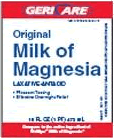3.2.6 Group 2, the Alkaline Earth Metals - Trends in chemical properties
Students should:
|
The chemical properties of group II metals
The reaction with water
The reactivity of the group 2 metals towards water increases on descending the group.
Magnesium reacts so slowly that only a small bubble of hydrogen gas is produced even after a few weeks. The other product is magnesium hydroxide, which is only slightly soluble:
Mg + H2O ![]() Mg(OH)2 + H2
Mg(OH)2 + H2
Calcium reacts steadily with cold water, onle again producing the hydroxide and hydrogen.
Ca + H2O ![]() Ca(OH)2 + H2
Ca(OH)2 + H2
The reaction is more vigorous with strontium and water:
Sr + H2O ![]() Sr(OH)2 + H2
Sr(OH)2 + H2
While the reactivity of barium towarsd water is similar in strength to theat of sodium from group 1.
Ba + H2O ![]() Ba(OH)2 + H2
Ba(OH)2 + H2
Solubility
The concept of solubiity is not as black and white as is often painted. Substances are not either soluble or insoluble when examined closely. The fact is that all substances dissolve to a certain degree, even apparently completely inert substances such as glass.
The degree of solubility of ionic compounds under specific conditions can be given by the solubility product, Ksp, which in turn is found from the product of the ions released into the solution raised to the power of their stoichiometric ratio.
NaCl ![]() Na+(aq) + Cl-(aq)
Na+(aq) + Cl-(aq)
Ksp = [Na+][Cl-]
Ba(OH)2 ![]() Ba2+(aq) + 2OH-(aq)
Ba2+(aq) + 2OH-(aq)
Ksp = [Ba2+][OH-]2
The higher the value of the solubility product the more soluble is the substance.
The relative solubility of the metal hydroxides
As mentioned in the previous paragraph, magnesium hydroxide is only sparingly soluble in water. Calcium hydroxide is slightly soluble, while strontium and barium hydroxides are effectively classed as soluble.
| Hydroxide | Ksp |
| magnesium hydroxide | 2 x 10-13 |
| calcium hydroxide | 5 x 10-6 |
| strontium hydroxide | 1.5 x 10-4 |
| barium hydroxide | 5 x 10-3 |
Barium hydroxide is a strong base, similar to the alkalis of group 1.
Uses of the metal hydroxides
 The
weakly basic nature of magnesium hydroxide makes it useful as a digestion anti-acid
medicine. The hydroxide neutralises the excess acid that causes acid-reflux
(indigestion and heartburn)
The
weakly basic nature of magnesium hydroxide makes it useful as a digestion anti-acid
medicine. The hydroxide neutralises the excess acid that causes acid-reflux
(indigestion and heartburn)
Calcium hydroxide is a stonger base than magnesium hydroxide and is used in agriculture to adjust the pH of acid soils and lakes.
Barium hydroxide is used as a reagent for titrimetric analysis due to its strongly basic nature.
The relative solubility of the metal sulfates
Unlike the group 2 metal hydroxides, the sulfates become less soluble on descending the group, with magnesium sulfate the only truly soluble sulfate of the group.
Calcium sulfate is only sparingly soluble and is often described in texts as insoluble. Strontium and barium sulfates are effectively insoluble.
| Sullfate | Ksp |
| magnesium sulfate | 4.7 |
| calcium sulfate | 9.1 x 10-6 |
| strontium sulfate | 3.2 x 10-7 |
| barium sulfate | 1.1 x 10-10 |
Ref: http://www.saltlakemetals.com/SolubilityProducts.htm
Use is made of the insolubility of barium sulfate in medicine, where it is used as a tracer ingested by a patient, which is opaque to x-rays allowing a means of displaying the digestive system to monitor for any disturbances or malfunctions.
The patient is asked to drink a slurry of flavoured barium sulfate and then is x-rayed over specific periods of time to allow transit of the barium sulfate through the digestive system.
Testing for sulfate ions
The test for sulfate ions makes use of the insoluble properties of barium sulfate.
The solution of the ions under test have a solution of barium chloride which has been acidified using hydrochloric acid.
If a white precipitate appears this is indicative of the presence of sulfate ions.
Ba2+(aq) + SO42-(aq)
![]() BaSO4(s)
BaSO4(s)
The hydrochloric acid is essential to ensure that neither carbonate ions nor sulfite ions can interfere with the test, as they too would give white precipitates with barium ions.
Ba2+(aq) + CO32-(aq)
![]() BaCO3(s)
BaCO3(s)
Ba2+(aq) + SO32-(aq)
![]() BaSO3(s)
BaSO3(s)
The test can also be carried out a little differently to identify all three ions:
1. Add barium chloride solution
2. If a white ppt appears add hydrochloric acid - there are two possibilities:
- A the ppt redissolves
- B: The precipitate persists
If B then its a sulfate
If A and bubbles of gas are seen and there is no smell then it's a carbonate
If A and there are no bubbles, but a metallic smelling gas then it's a sulfite.